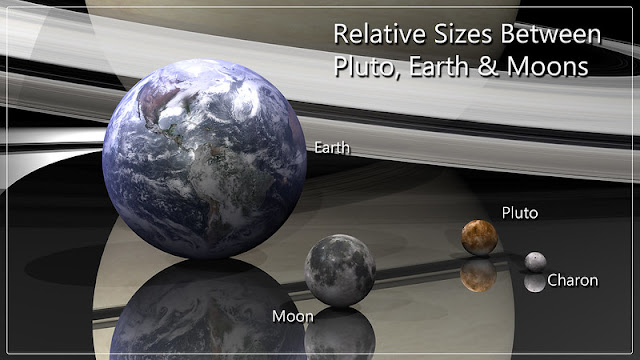How Big Are The Outer Planets In Our Solar System?
Question posed by Milo.
The outer planets of our solar system are Jupiter, Saturn, Uranus and Neptune[1]. Respectively, their average diameters are (roughly) 140,000 km, 120,000 km, 51,000 km and 50,000 km.
But if you're anything like me, those numbers are far too big to really mean anything. So lets compare them to something: home. The Earth's average diameter is something in the region of 13,000 km. Knowing this fact, we can talk about the sizes of other things in terms of how much bigger they are than Earth. This is actually a trick that's often used by astronomers to help to make sense of things: stars are often spoken about in terms of how many times heavier they are than our own Sun; the Astronomical Unit is a way of talking about distances in terms of how many times further away from the Sun something is than Earth.
Jupiter
 |
| Earth/Jupiter Size Comparison, Brian Altmeyer (CC BY 2.0) |
Saturn
 |
| Earth/Saturn Size Comparison, Brian Altmeyer (CC BY 2.0) |
Uranus
 |
| Uranus, Earth size comparison, Orange-kun, (Public domain), via Wikimedia Commons |
Neptune
 |
| Earth/Neptune Size Comparison, Brian Altmeyer (CC BY 2.0) |
Uranus's only-just-little brother Neptune is just a bit less than four times the size of Earth, in terms of average diameter, which is still big, but I'm always surprised at how not-big it actually is. It's a pretty colour, too. Here's a picture to help the comparison along - aren't I good to you? And yes, Earth and Neptune are nowhere near as close to each other as this holiday snap would suggest: imagine how fast our orbit would have to be if we were!
Oh, go on then.
 |
| Earth - Pluto Comparison, Kevin Gill (CC BY 2.0) |
I know Pluto's not a planet, but we love it anyway, and it'd be a shame not to visit when we're this far out already. Pluto's just a little more than 2000 km across - it's smaller than Earth's Moon - meaning that Earth is about 6 and a half times as big. In the image you can see that Pluto's moon, Charon, is much larger compared to Pluto than the Moon is compared to Earth.
Footnotes:
- Remember, Pluto's not a planet! [back]



Comments
Post a Comment